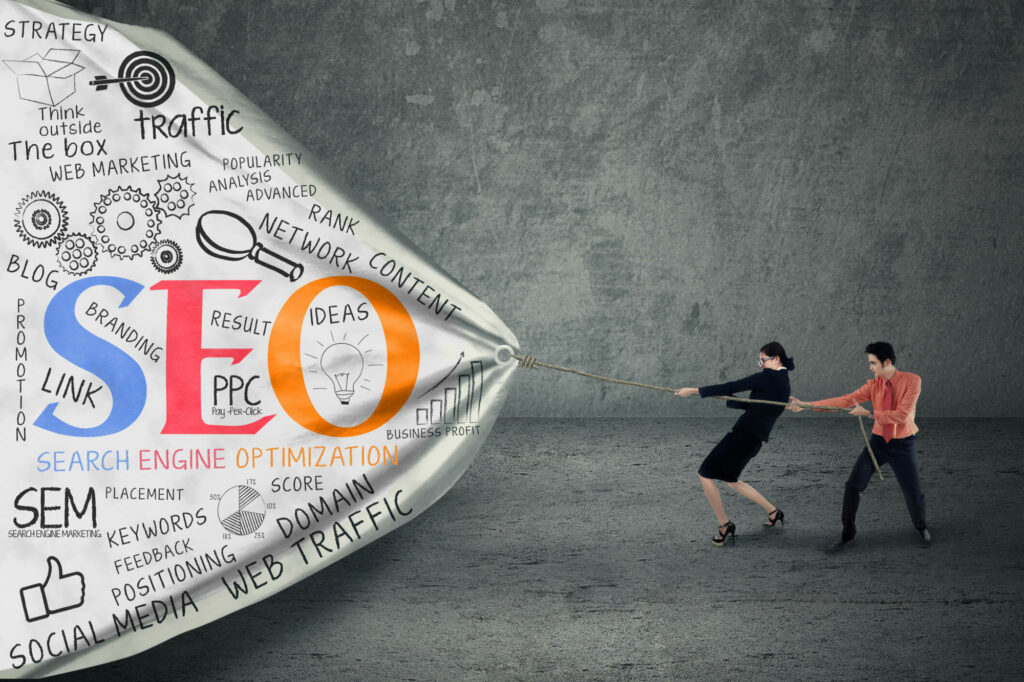The Official Merchant Services Blog once again picks up its thread about the impact 2011’s holiday shopping season is going to have on e-commerce. Previously we gave merchants tips on improving their e-commerce experience for customers. These tips were primarily focused on things merchants can do with their website and their online shopping cart. Today we’re going to offer some tips on improving your site’s Search Engine Optimization (SEO). This is basically the other side of the coin. With the first set of tips the goal was to make it easy for your potential customers to use your site, and buy things from you effectively. With these SEO tips the goal is to make it easy for potential customers to find your web site in the first place.
What is SEO?

Search engine optimization (SEO) is the process of improving the visibility of a website or a web page in search engines via the “natural” search results that come up from using the search engine. SEO is absolutely vital to your online business. SEO is what helps the search engines such as Google find your website or your products in whichever marketplace you are using. In general, the earlier (or higher ranked on the search results page), and more frequently a site appears in the search results list, the more visitors it will receive from the search engine’s users. So the basic goal of SEO is to get a web site ranked on the first page.
How to Improve your SEO
Here are a few effective tips from Google itself and its SEO Report Card to help you use best SEO practices and boost traffic to your website or listings:
-
Offer Quality Content and Services
–– According to Google, interesting websites will increase search engine recognition on their own. The internet is content driven. So the first step in improving your SEO is to make sure you have compelling, consistent content. In fact, here is what the Google SEO gurus have to say about your site’s content: “Creating compelling and useful content will likely influence your website more than any of the other factors discussed here.” Great content is more apt to be shared and linked to, which will help boost your rankings with the search engine results pages, or SERPs.
-
Create more descriptive title tags
–– Optimized keywords and an effective URL naming structure can help the search engine understand the content of the page better. It is suggested to use a maximum of 60 characters on title tags as an opportunity to tell both users and search engines what the focus of the page is. There’s no need to go past this many characters, as most search engines will display ellipses ( … ) after this limit. Also, search engines may give less weight to words after a certain point.
-
Write Better Anchor Text
–– What is anchor text? It’s the clickable text that users see as the result of a link and is placed within the anchor tag. This text tells Google and the other search engines, as well as internet users, a little something about the page you are linking to. You should use descriptive, concise text and format links so that they’re easily spotted. Don’t neglect your internal anchor text, either.
-
Create effective URLs
–– Choose the form of the URL that is easiest to remember as the canonical and be consistent with this canonical form across all products. Think of the most common URL forms visitors are likely to try and then 301 redirect these to the preferred/canonical URL or be sure to use the rel=”canonical” link element if you cannot redirect.
-
Optimize Your Use of Images
–– In the last blog post, we discussed the importance of using high quality images of your products in your shopping cart and how that helps you make sales. Those same images can help your SEO, if you utilize the text that comes with them properly. You can use a filename along with alt text for images and should take full advantage of both. The content of the alt attribute contains information about your image. Don’t scatter your image files in a bunch of directories and subdirectories, but store them all in a single directory. This will greatly simplify the path to your images. Use commonly supported file types such as PNG, JPEG, GIF and BMP.
The real work here for a successful e-commerce merchant is combining the strategies from the previous blog with the tips presented here. You need to make your site come up on the first page of a google search so customers can find you. Then once they click you need to have an strong, easy to use site so those same customers can make their purchase quickly and hassle-free. All of this leads up to the final submission of the sale, which is where Host Merchant Services steps in and makes the payment processing easy for you and completely worry-free. Let our tips and information help you with the first two steps, and then we’ll handle the processing.

